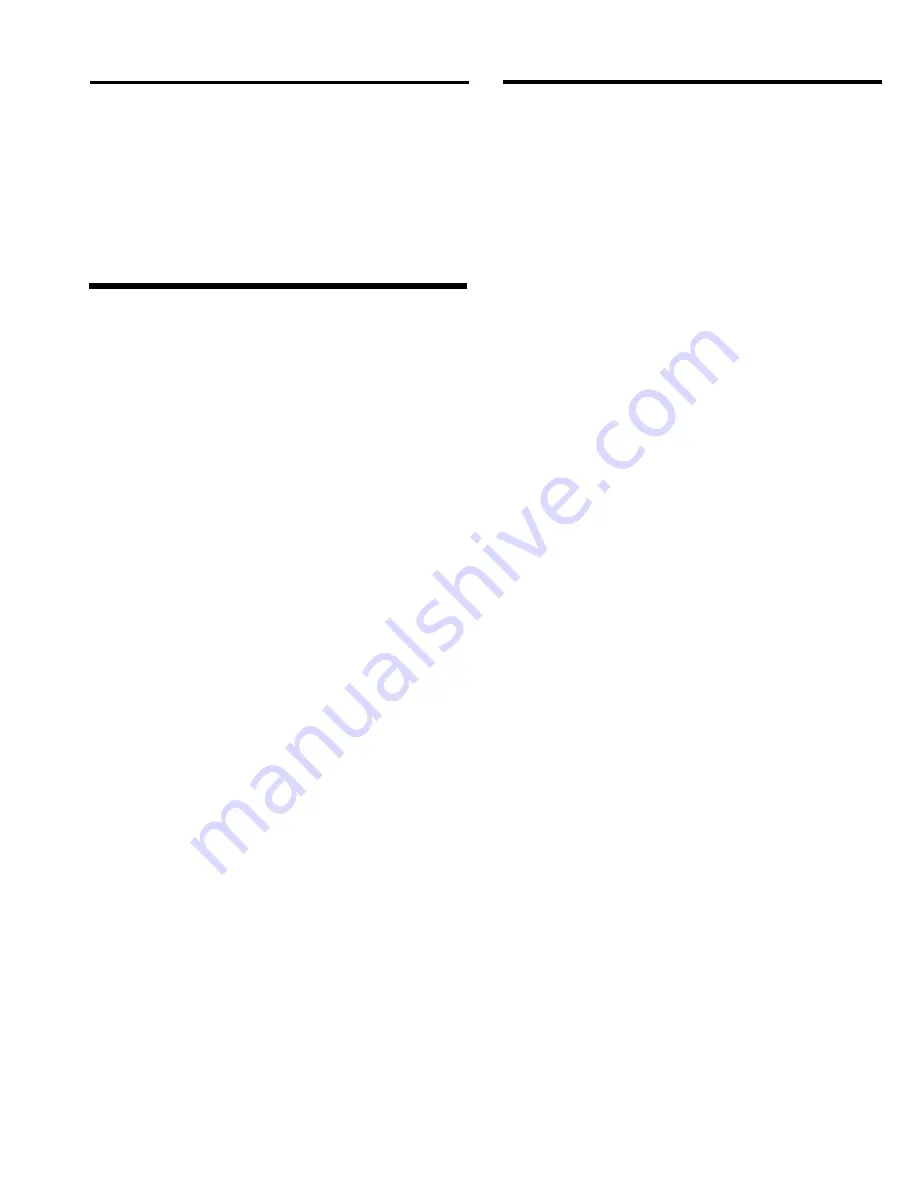
APOLLO 20 LP SUPPLIED-AIR RESPIRATOR
Page 8
6.1.7
Install the suspension by inserting the four white
plastic tabs into the clefts on the shell. The tabs must fully
seat in their respective locators.
6.1.8
Try the helmet on for fit and readjust if necessary.
6.1.9
Check that the chin strap is in place, then reattach
the cape onto the helmet following the instructions in
Section 9.4.
7.0
MAINTENANCE PROGRAM
7.1
Basic Service
7.1.1
A program for maintenance and care of the respi-
rator must be established based on application, working
conditions, and hazards involved, and include the follow-
ing basic service.
• Inspection for defects (including a leak check)
• Cleaning and disinfecting
• Repair (service maintenance)
• Storage
Equipment must be properly maintained to retain its origi-
nal effectiveness. [Reference OSHA Regulations 1910.134
(f)].
7.2
Inspection
7.2.1
Inspect respirators before and after each use.
Inspection shall include a check for tightness of connec-
tions and the condition of the lenses, suspension, cape
and elastic parts, breathing tube, respirator hose and
connectors, and Constant-Flow Connector. [Reference
OSHA Regulations 1910.134 (f)(2)].
7.2.2
The respirator hose, breathing tube, air entry
ports, and fittings must be checked for dust contamination,
and cleaned before making connections.
7.2.3
The helmet suspension is a very important com-
ponent for maintaining maximum head and respiratory
protection. It must be inspected for fit and wear on a daily
basis, and replaced immediately at the first sign of wear.
(See Section 6.1)
7.2.4
The inner collar is a very important factor in
controlling air escape from the helmet and preventing
ingress of dust. The elastic properties of the collar are
intended to provide a snug fit on the user’s neck. The cape
must be replaced before the collar is stretched to the point
where it no longer fits snugly around the neck.
7.2.5
The outer cape provides protection from rebound-
ing abrasive and from abrasive ingress into the helmet.
Inspect the outer cape frequently for wear. Replace the
cape before holes are worn through, or any wear occurs
that prevents the cape from providing the protection for
which it is intended.
7.3
Cleaning and Disinfecting
7.3.1
Respirators must be cleaned and disinfected as
frequently as necessary to ensure that proper protection is
provided to the wearer. Respirators used by more than one
person must be cleaned and disinfected after each use.
See Section 8.0 for cleaning instructions. [Reference
OSHA Regulations 1910.134 (b)(5); 1910.134 (f)(3)].
7.4
Repair (Service Maintenance)
7.4.1
Replacement or repairs shall be done only by
trained persons, using genuine Clemco parts designed for
the respirator. No attempt shall be made to replace com-
ponents or to make adjustment or repairs beyond the
manufacturer’s recommendations. See Sec. 9.0 for ser-
vice instructions. [Reference OSHA Regulations 1910.134
(f)(4)].
7.5
Storage
7.5.1
Daily Storage
7.5.1.1 When the respirator is not in use, it must be stored
in a clean, dry area. Hang the respirator by the handle. Do
not tuck the cape inside the helmet. Let the cape hang
loose to allow air to circulate, to dry condensation from the
cape and from inside the helmet.
7.5.2
Long-term storage
7.5.2.1 After inspection, cleaning and thorough drying,
and after necessary repairs are made, the cape should be
tucked inside the helmet. The respirator shall then be
placed in a plastic bag and the bag sealed to keep out dust
and moisture. Place the bag in a clearly marked carton and
store it in a clean, dry place. [Reference OSHA Regula-
tions 1910.134 (f)(5)].
























